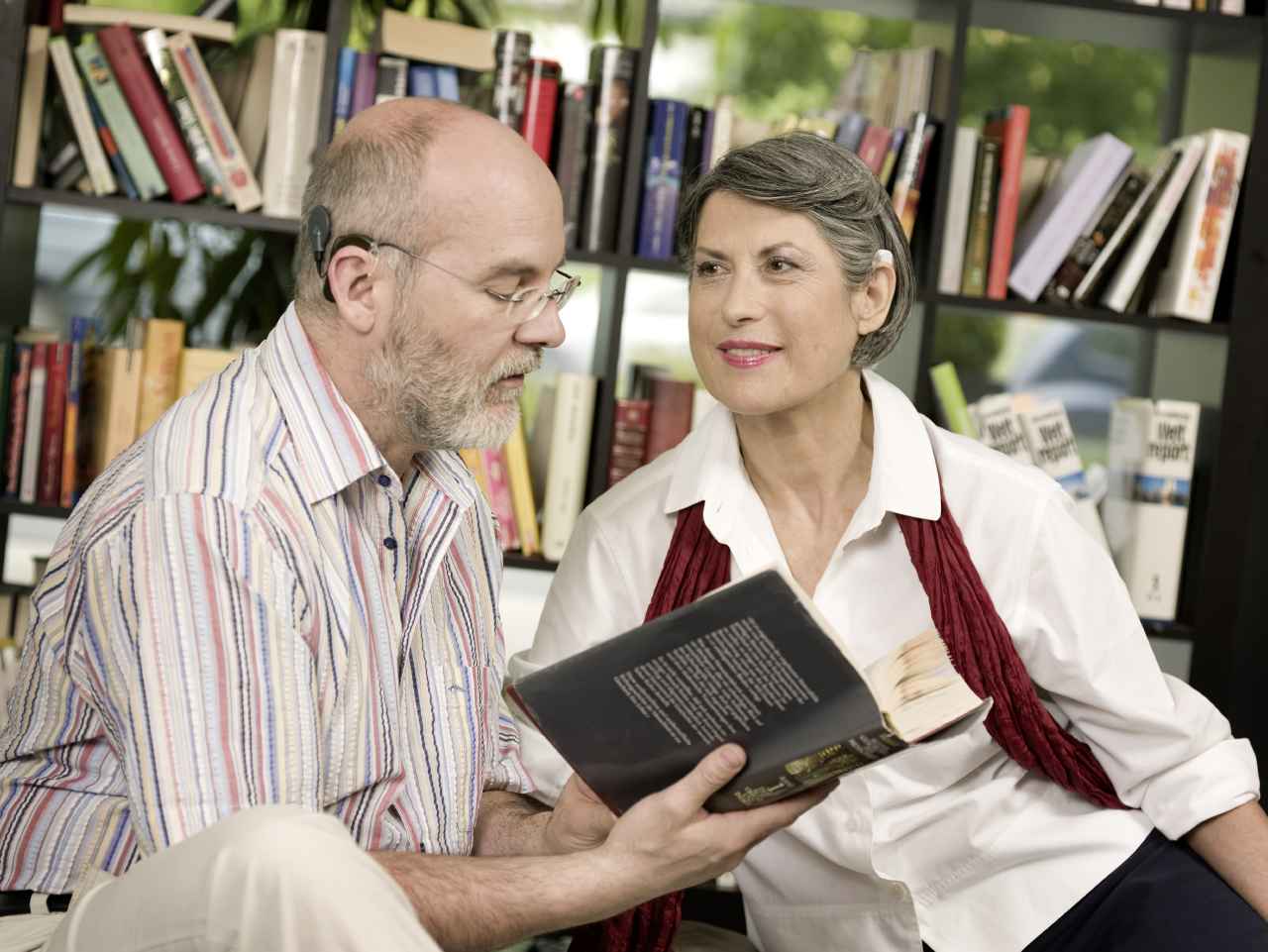MED-EL, Rebecca Claridge
Published May 06, 2016
How Speech Tracking Can Build Communication Skills
Want to build your listening and communication skills? A great and easy way to do that is with speech tracking. Speech tracking is a method of practicing and evaluating your listening skills, and can also help you and your communication partner develop more efficient methods of fixing a communication breakdown.

Speech tracking involves basically listening to a person say some words, and then repeating those words back to them. It was first developed in 1978 by DeFilippo and Scott and since then has been used in clinics around the world. You might have already done something similar with your therapist!
But it’s not something that you can only do at the clinic. All you need is a partner and a book, and you can do it just about anywhere.
Here’s what to do:
Speech Tracking
Speech tracking is easy. All you need is someone to talk with, and a book, newspaper, magazine, or other piece of text.
- Choose a story that you’re interested in. Good stories for speech tracking tend to have fairly simple language and are about a topic you like.
- Sit down with your partner:
- Sit in front of your partner, if you want to practice both lip-reading and listening.
- Sit side-by-side with your partner, if you want to practice listening alone.
- Make a note of where they are starting to read on the text.
- Set a timer to go off after a certain period of time, for example 10 minutes.
- Have your partner read back a short bit of text: short, as in just 3 or 4 words is enough.
- Repeat back exactly what you heard.
- If you got every word right, have your partner continue to read more from the text. As you get more confident, have them increase the number of words they say or the speed at which they speak.
- If you get a word wrong, use some clarification techniques (that are described further down in this blog post) until you get every word right. Then, have your partner continue to read more from the text.
- When the timer is up, mark where your partner finished reading. Count the number of words you successfully repeated back, and write that down. Divide that number by 10–or whatever the number of minutes you set on the timer was—and you’ll have your “tracking per minute” speed—as you keep practicing speech tracking in the next weeks or months, you can compare your results to gauge how well you are improving.
Clarification Techniques
Sometimes you won’t hear every word correctly. That’s okay! Here are some ways that you and your partner can help you to hear those words that you might have misheard.
- Have your partner say just a few words, and emphasize the ones that you missed.
- Ask your partner a specific question about the word you’re not sure you heard correctly: “Am I hearing the word ‘angle’ correctly?”
- Have your partner say just the word you misheard. Then, have them say the sentence as normal.
- Have your partner give you a clue about what the word means, like its definition or a synonym. Then, have them say the sentence as normal.
- Have your partner add extra visual cues, like lip-reading, or facial and body expressions.
Speech Tracking for New Recipients
You can try speech tracking even if you are just starting out, by focusing on the text word-by-word. When your communication partner is reading along, look at the text together. Then you can both see and hear the words that are being said. For extra help, you could also ask them to follow along with their finger, pointing out each word as they say it.
References
-
[1]
Levitt, H. (2012). Speech Tracking Revisited. ARA institute. Providence, RI. September 10th.
-
[2]
Plant, G. (1984). COMMTRAN: A Communication Training Program for Profoundly Deafened Adults. Sydney. National Acoustic Laboratory.
-
[3]
Plant, G. (1991). SYNTREX: Synthetic Training Exercises for Hearing Impaired Adults. Sydney. National Acoustic Laboratory.
-
[4]
DeFilippo, C.L. & Scott, B.L. (1978). A method for training and evaluating the reception of ongoing speech. Journal of Acoustical Society of America. 63(4):1186-92.
-
[5]
Preminger, J. E. (2003). Should Significant Others Be Encouraged to Join Adult Group Audiologic Rehabilitation Classes? Journal of the American Academy of Audiology. 14(10): 545-555
-
[6]
Preminger, J. E. & Meeks, S. (2010). Evaluation of an Audiological Rehabilitation Program for Spouses of People with Hearing Loss. Journal of the American Academy of Audiology. 21(5):315-328
-
[7]
Tye-Murray, N. (1991) Repair Strategy Usage by Hearing-Impaired Adults and Changes Following Communication Therapy. Journal of Speech, Language, and Hearing Research. 34:921-928.
References


MED-EL
Rebecca Claridge
Rebecca Claridge is a certified practising Speech Pathologist with more than 30 years’ experience. She certified as a Listening and Spoken Language Specialist in 2008; has worked at the Sydney Cochlear Implant Centre, Brisbane’s Hear and Say Centre and her own private practice. In 2016 she was contracted by MED-EL to create the popular free downloadable resources ‘MED-EL Lesson Kits’ and in 2017 joined MED-EL’s global Rehabilitation Department. In 2021 she moved into a newly created position with MED-EL addressing the rehabilitation needs of Australia, New Zealand and Japan.
Was this article helpful?
Thanks for your feedback.
Sign up for newsletter below for more.
Thanks for your feedback.
Please leave your message below.
Thanks for your message. We will reply as soon as possible.
Send us a message
Field is required
John Doe
Field is required
name@mail.com
Field is required
What do you think?
© MED-EL Medical Electronics. All rights reserved. The content on this website is for general informational purposes only and should not be taken as medical advice. Contact your doctor or hearing specialist to learn what type of hearing solution suits your specific needs. Not all products, features, or indications are approved in all countries.


MED-EL
Rebecca Claridge
Rebecca Claridge is a certified practising Speech Pathologist with more than 30 years’ experience. She certified as a Listening and Spoken Language Specialist in 2008; has worked at the Sydney Cochlear Implant Centre, Brisbane’s Hear and Say Centre and her own private practice. In 2016 she was contracted by MED-EL to create the popular free downloadable resources ‘MED-EL Lesson Kits’ and in 2017 joined MED-EL’s global Rehabilitation Department. In 2021 she moved into a newly created position with MED-EL addressing the rehabilitation needs of Australia, New Zealand and Japan.

MED-EL

Rebecca Claridge
Rebecca Claridge is a certified practising Speech Pathologist with more than 30 years’ experience. She certified as a Listening and Spoken Language Specialist in 2008; has worked at the Sydney Cochlear Implant Centre, Brisbane’s Hear and Say Centre and her own private practice. In 2016 she was contracted by MED-EL to create the popular free downloadable resources ‘MED-EL Lesson Kits’ and in 2017 joined MED-EL’s global Rehabilitation Department. In 2021 she moved into a newly created position with MED-EL addressing the rehabilitation needs of Australia, New Zealand and Japan.


